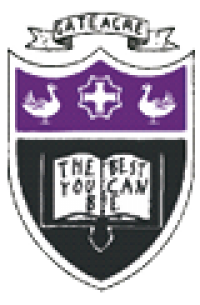KS2-3 Curriculum
By the end of Key Stage 2 students have covered:
Number: Place value; addition/subtraction/multiplication & division; fractions (and some decimals, percentages and ratio); basic algebra (usually worded formula or equations)
Measurement: areas and perimeters of simple shapes; volume of simple prisms; converting measures for length, mass, volume and time.
Geometry: Recognise and name 2D and 3D shapes and their nets; know the parts of a circle; start to recognise angle rules; plot coordinates and translate shapes
Statistics: draw and interpret bar charts and pie charts; calculate the mean of a list of numbers.
The main intent for our year 7 curriculum is to make the transition from KS2-KS3 as smooth and seamless as possible and challenge students immediately with new material suited to their ability. We must avoid the pitfalls of just going over what the students have learned in primary school and instead start to build on this learning and accelerate their progress as quickly as possible. All staff are fully aware of the rigour of the new KS2 curriculum and strive to make the transition into KS3 as easy as possible for our students.
Our baseline system which the students undertake in the first week or so of year 7 allows us to quickly QLA each student and identify gaps in their knowledge. By analysing a classes gaps and linking these topic areas to our SOL we can make sure that we pitch our programme of study for each year 7 class at the highest possible point. This means that instead of reviewing an entire year’s worth of work before we get into the KS3 work, we can consolidate and ‘plug gaps’ for a few weeks in the Autumn term then get straight on with the new, challenging KS3 curriculum.
It is also our responsibility to be aware of whatever methodology has proved successful for students at KS2 and build this into our planning for KS3. For this reason we are working closely with feeder primary schools (Rudston and Woolton to start with) to look at their use of manipulatives and diagrammatical explanations especially in the area of proportion as this underpins a vast amount of work both at KS3 and KS4. The sequencing of lessons for the year 7 SOLs all focus on ratio and proportion at the start and move on to algebra. The thinking behind this is that students need to get to grips with algebra as quickly as possible as we will use it to model problems using the knowledge in later topics. This also applies to proportion: this is something that students need to be confident with in order to fully access topics that come up later in the year such as angles, and equations and a firm grasp of proportion will enable students to fully explore the links between topics that underpin our Intelligent Practice fluency exercises.
We finish Year 7 with an enrichment module for the entire year group based around The Beatles. This focuses specifically on the data around The Beatle’s songs and album sales over the period of their career. Historically year 7 students have struggled with data concepts so this will not only add a lot of cultural capital to the year 7 experience here at Gateacre, but also underpin a review process on an area of the curriculum our students usually find challenging.

